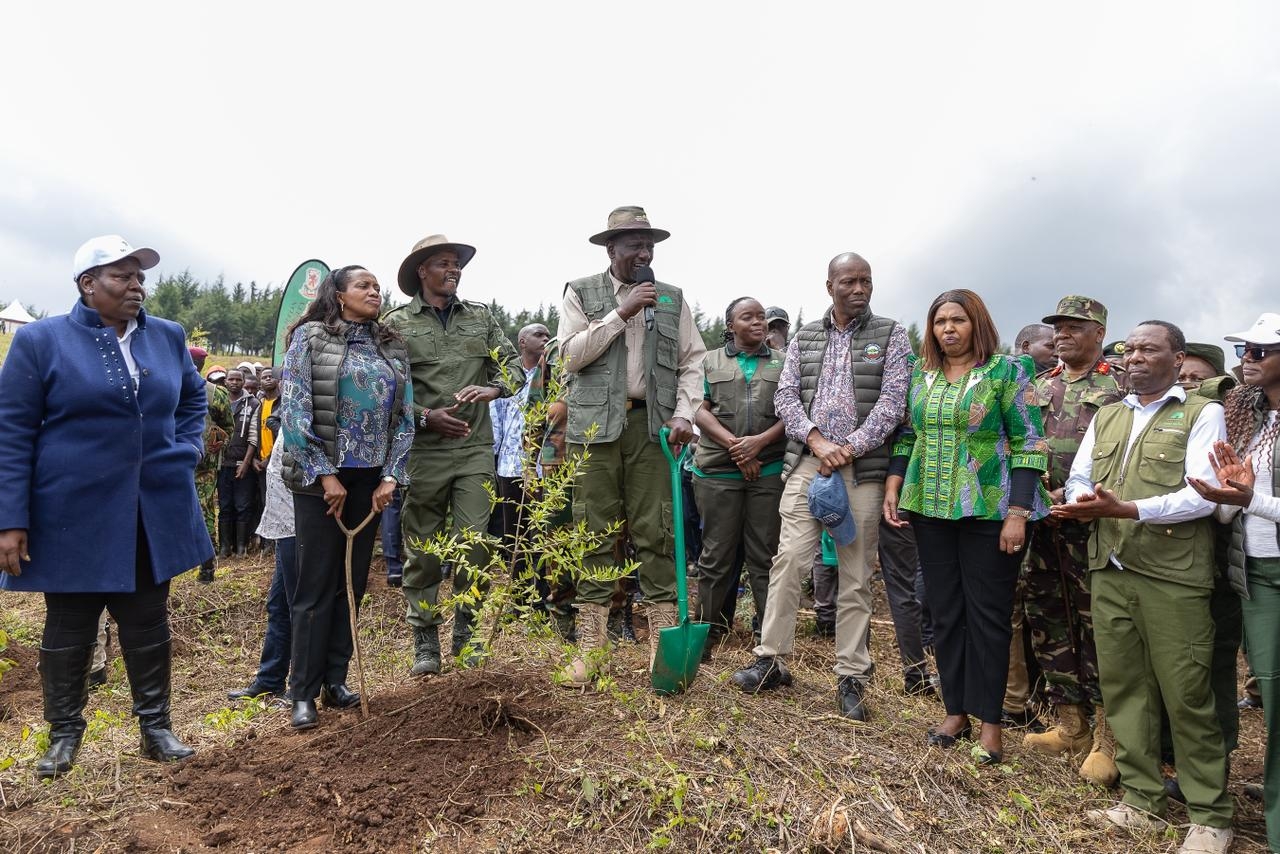Kenya’s iconic elephants within the Amboseli ecosystem risk losing their genetic composition and structure should the unabated trophy hunting within Tanzania’s Enduimet area go unchecked.
This was the clarion call by wildlife scientists and conservationists on Monday.
It follows revelations that Tanzania is in the process of issuing licenses to allow the poaching of super tuskers, most of which are a transboundary resource between Kenya and Tanzania.
The controversy clouded this year’s World Elephant Day commemoration.
Marked on August 12 annually and launched in 2012, World Elephant Day aims to bring more public awareness to the plight of both Asian and African elephants.
As the marking of the day got underway on Monday, a senior wildlife scientist told the Star that Kenya risked losing the elephants genetic composition.
This is as well as affecting social structure of her jumbos within the Amboseli ecosystem should the ongoing trophy hunting in Tanzania not stop.
Save the Elephants Senior Scientist Dr Festus Ihwagi on Monday said there are only 10 super tuskers within the Amboseli ecosystem.
The 10 jumbos are however living on borrowed time as Tanzania, which neighbours Kenya, is accused of continually dishing out new controversial licenses allowing trophy hunters to kill them.
“If we lose the 10, we will lose the genetic composition, the gene frequency of these elephants. These are elephants that are at the prime breeding stage and carriers of the important genes,” Ihwagi told the press at Serena Hotel.
Present during the press conference were conservationist including WildlifeDirect CEO Paula Kahumbu and Teens4Wildlife founder Tiassa Mutunkei.
The press conference overshadowed the marking of World Elephant Day.
Ihwagi said the ongoing trophy hunting will also compromise the social structure of jumbos.
“Elephants live in polygamous herd families. That means that a bull is visiting or servicing females from various families. And as they do that, they do command a social structure. They are very important and if you lose the big bulls, you are affecting the social structure of the elephant family,” he said.
He said elephant families are interconnected just like human ones.
Ihwagi said the movement of elephants could be seasonal or non-seasonal.
“In general, they move in search of food and water. However, for the bulls alone, they do not necessarily move just because of that. They move looking for mates when they are in the breeding stage. That does not have a clear calendar, they move any time,” Ihwagi said.
Kahumbu said they have collected over 500,000 signatures so far in their bid to halt the issuance of new trophy hunting licenses and formalise a ban on hunting.
“We want Tanzanian authorities to work with Kenya to recognise the scientific, ecological and economic value of the big tuskers,” she said, adding that elephants cannot speak for themselves.
Kahumbu said they have already written to the Tourism ministry and Kenya Wildlife Service about challenges facing big tuskers in Tanzania but there has been no response.
In 1995, a moratorium on trophy hunting of cross-border elephant populations was agreed upon between Kenya and Tanzania.
In Tanzania, the Wildlife Conservation (Tourist Hunting) (Amendment) game fees payable for tourist hunting for African elephants—at least one tusk weighing 30kg and above or not less than 160cm—is $12,000.
An African Elephant—at least one tusk weighing 30kg and above or not less than 160cm—goes for $20,000, according to Tanzanian regulations.
The ongoing trophy hunting in Tanzania is now giving Kenya’s conservationists and scientists sleepless nights. This is because the Amboseli elephant population is a cross-border resource inhabiting both Kenya and Tanzania.
The Amboseli ecosystem includes Amboseli National Park and the surrounding conservancies and lands in Kenya (8,000 km2). It also includes the Enduimet Wildlife Management area and beyond in Tanzania.
For 51 years, these elephants within the Amboseli ecosystem have been closely studied by the Amboseli Elephant Research Project.
It is the longest continuously running study of elephants in the world and one of the longest studies of any animal in the world.
Each elephant is known individually, has a code number or name and is documented photographically.
Birth dates for all but a few of the older individuals are known, as are those of the mother, the family and, in some cases, the father.
A detailed database contains every elephant identified over five decades ago, including births and deaths and numbers over 4,000 individuals.
A linked database houses every recorded sighting.
The Amboseli data is an extraordinarily rich and important body of knowledge.
Each individual, each record is a building block that underpins this immense scientific achievement gained over the past half-century.
Much of what is known about elephant behaviour, communication, social structure, demography, reproduction and genetics, has resulted from this study.
There are 63 elephant families in the Amboseli population, of which 17 families, consisting of 365 members, regularly spend time in Tanzania.
Kenya hosts 36,280 elephants, according to a 2021 census that covered 343,380 km2 of Kenya’s landmass for Sh250 million.
The 2021 census was conducted from May to August 2021 and generated baseline numbers of wildlife.
Another national census is ongoing and is expected to be completed next year for Sh300 million.
Kenya's key wildlife landscapes are currently facing multiple challenges. They include increasing human and livestock populations, impacts of global climate change, the spread of invasive and alien species and the dangers of infectious zoonotic diseases.
This means frequent monitoring remains a priority.












